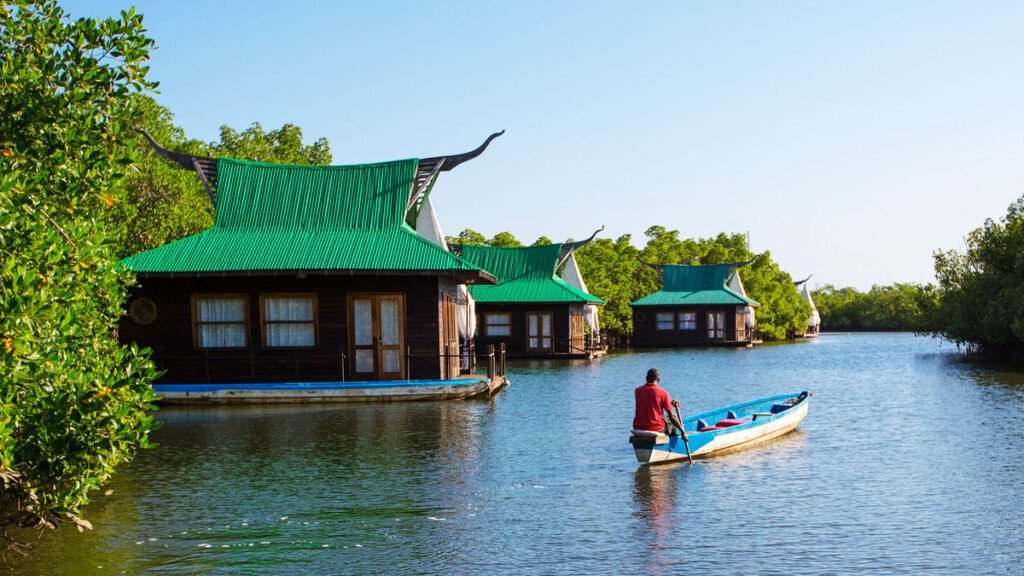For years, Gambia has been recognized primarily as a serene beach getaway in West Africa. However, its reputation is evolving as the country emerges as a destination renowned for conservation and a rich cultural landscape.
Recently, the Gambia Tourism Board launched an extensive marketing initiative, supported by the World Bank’s Tourism Diversification and Resilience Project, to position Gambia as a premier ecotourism destination.
“The global tourism landscape is changing, and The Gambia is adapting accordingly,” asserts Abubacarr Camara, director of the tourism board. He emphasized that while beach tourism remains a hallmark, there is a concerted effort to harness the potential of ecotourism, heritage experiences, and adventure travel.
This small West African nation is proving attractive to first-time visitors from English-speaking countries due to its accessibility. “For anyone exploring Africa for the first time, The Gambia serves as a perfect introduction,” says Linda Verasdal, a tourism entrepreneur with over 15 years of experience in the country. “English is the official language, simplifying communication with locals.” This ease of interaction enhances visitor engagement with numerous eco-centric tourism projects in the region.
Just an hour south of the primary tourist hub lies Gunjur, a village bustling with grassroots initiatives. Key projects include the Turtle Project, dedicated to protecting sea turtle eggs, and an inventive plastic recycling program. Verasdal notes, “These grassroots initiatives truly make a difference. Engaging with them offers visitors insights into the challenges and triumphs faced by the community.”
Another innovative undertaking is the Gambia Cotton Trail, designed to connect coastal Gunjur with the inland village of Njau. This women-led initiative promotes local craftsmanship through a detailed exploration of the cotton production chain, from cultivation to tailoring. “It’s a fantastic opportunity to learn about local culture, meet fascinating people, and delve into the country’s history,” Verasdal highlights.
For travelers eager to experience these community endeavors, Footsteps Ecolodge in Gunjur stands out as one of the longest-established ecolodges in Gambia. Located about a mile from the beach, it offers a scenic 25-minute walk through beautiful, off-road terrains.
Explore the Wild Side: River Safaris and Rare Monkeys
Voyaging from the coast, travelers can embark on small-boat tours along the River Gambia, which holds the title of Africa’s most navigable waterway. Near Gunjur, these excursions meander through charming tributaries and border waters, with stops at Pelican Island to witness flocks of water birds.
For adventurous wildlife viewing, visitors can travel upriver. “To see hippos and rare red colobus monkeys, you can take a few hours’ journey by car and stay overnight,” Verasdal recommends. Visitors can enjoy watching wildlife at sunset, followed by morning visits to various monkey colonies.
For those planning an upriver stay, the recently upgraded Kauren River Camp offers picturesque views and convenient access to historical sites, such as the Roots attractions in Albreda and Juffereh, as well as thrilling wildlife experiences near Kuntaur. Other budget-friendly options like Kairoh Garden or Musa’s Garden Lodge provide authentic hospitality along with hiking trails, sunrise kayaking sessions, and engaging community interactions.
A standout initiative in the area is the Red Colobus Project, which focuses on forest preservation funded by visitor fees. Guests are invited to join guided walks to spot these rare primates amidst ancient trees.
Inland activities are expanding with operations like FairPlay Gambia, a social enterprise located in Janjanbureh that offers diverse excursions, from sunset cruises to multi-day expeditions along the River Gambia. Activities include kayaking, hiking, fishing for the famed African tigerfish, and visits to the River Gambia National Park, home to rescued chimpanzees on protected islands.
Verasdal notes that Gambia’s position on key bird migration routes makes it an ideal location for birdwatching enthusiasts, with over 500 species recorded. “Some visitors arrive solely for birdwatching and discover a wealth of other activities, like tranquil trails where they can spend hours with minimal tourist traffic,” she adds.
Growing Cruise Tourism
Interestingly, cruise lines are increasingly adding Banjul, the capital city, to their itineraries. Major cruise lines such as Norwegian Cruise Line, Oceania Cruises, Holland America Line, Seabourn Cruises, Azamara Club Cruises, and Silversea have featured stops in Gambia, offering day excursions that highlight the nation’s natural and cultural treasures.
For those seeking a more immersive experience, Verasdal suggests combining coastal experiences with upriver adventures. “I recommend spending a week at a place like Footsteps Eco Lodge, then adding three or four nights upriver to explore wildlife, culture, and adventure activities,” she advises. “This way, you can truly understand the Gambian way of life.”
With short distances and everyone proficient in English, visitors can thoroughly experience the essence of Gambia within 10 to 14 days. This includes profound visits to historical sites like Kunta Kinteh Island, exploring the history of the slave trade, serene early morning paddles while observing kingfishers skimming the misty waters, and evenings spent learning the art of transforming cotton threads into beautiful crafts.



